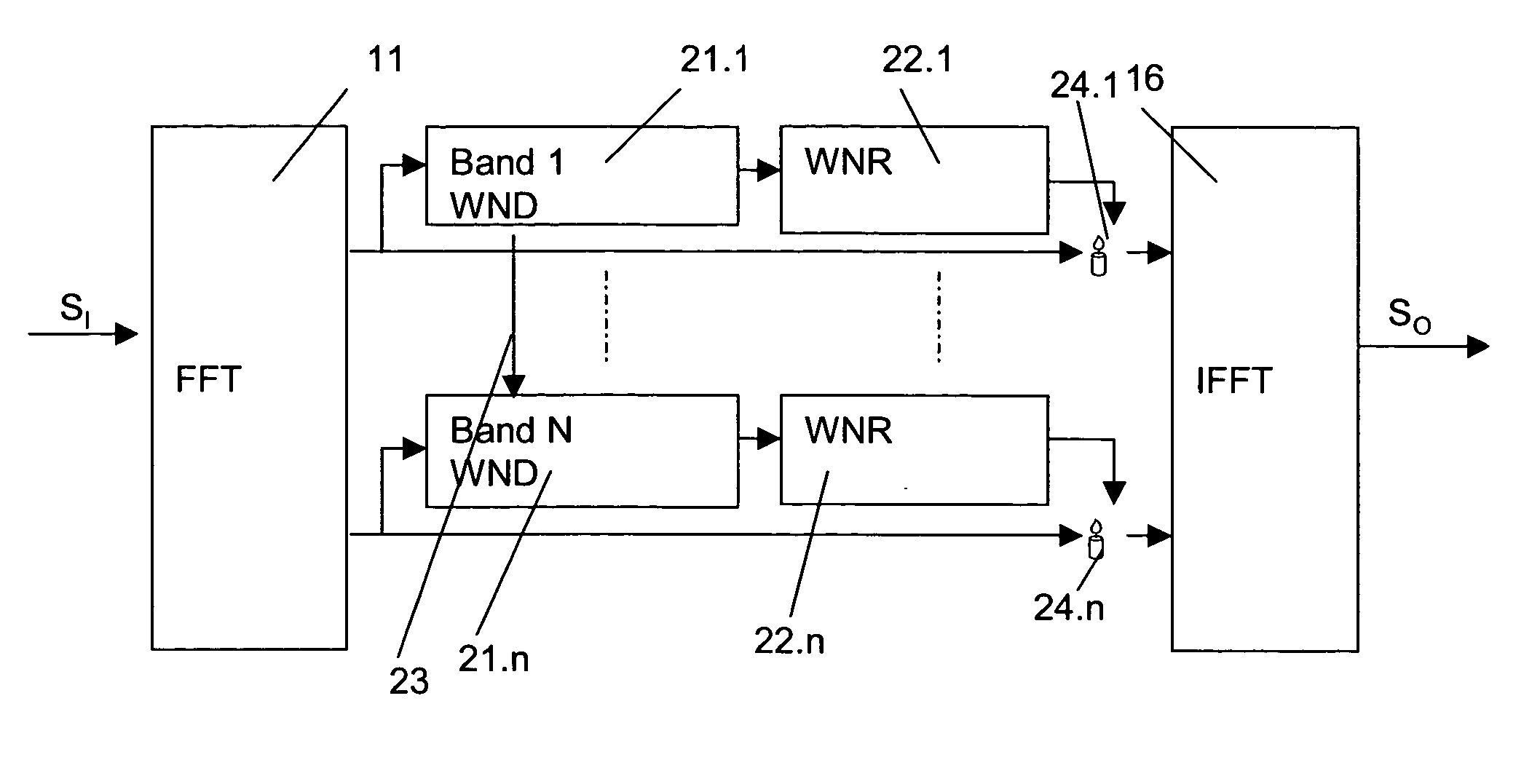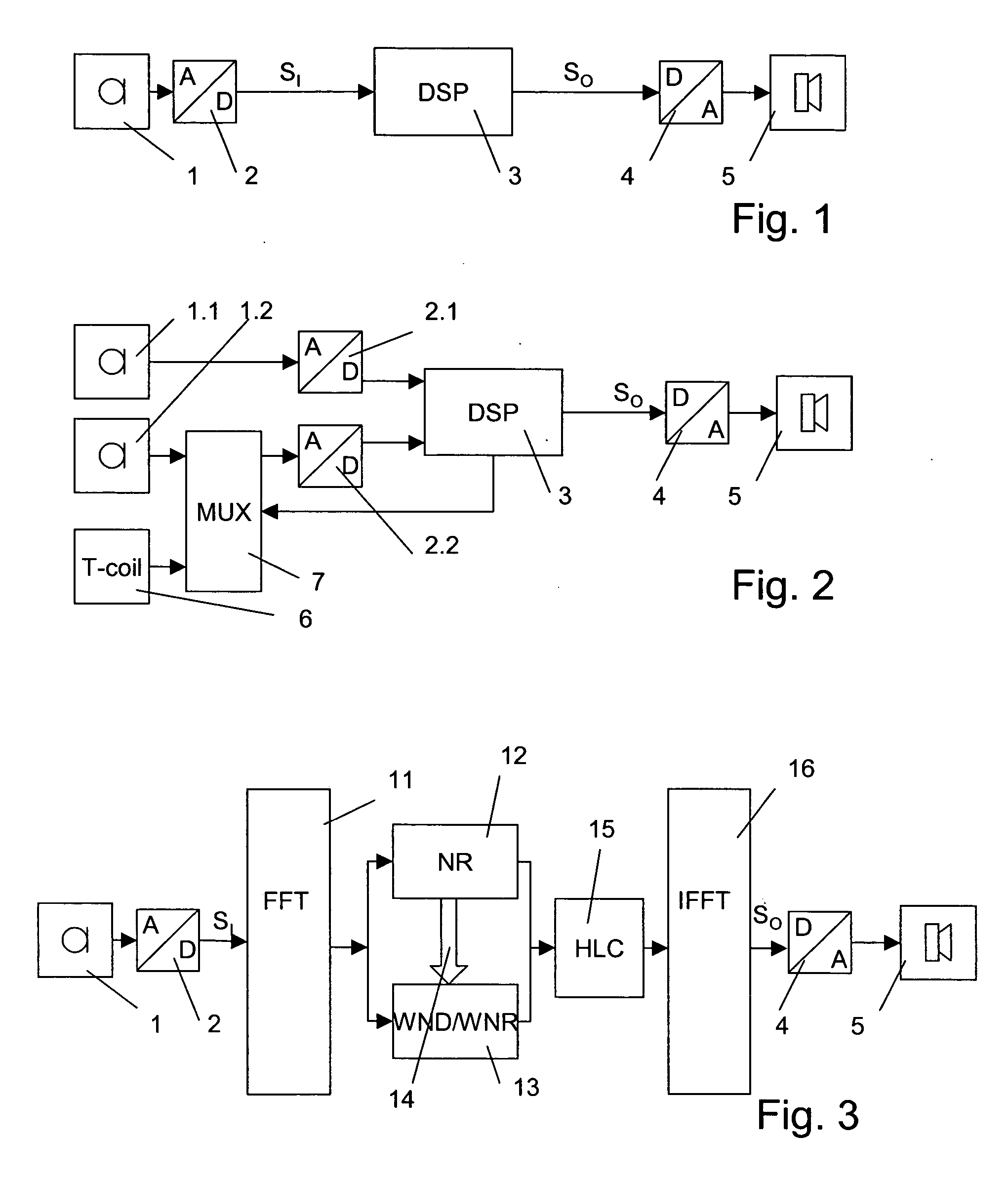Method and device for processing an acoustic signal
a technology of acoustic signal and processing method, which is applied in the direction of transmission, application, electrical apparatus, etc., can solve the problems of reducing speech discrimination affecting the speech of hearing aid users, so as to reduce the effect of wind nois
- Summary
- Abstract
- Description
- Claims
- Application Information
AI Technical Summary
Benefits of technology
Problems solved by technology
Method used
Image
Examples
first embodiment
[0098] In a first variant, as described above, the signal index is used to verify a wind noise count determined according to the The frequency band indicator value may be chosen to be a function of both, a wind noise duration and the signal index.
[0099] In a second variant, the indicator value is set to be the signal index. Then, the attenuation value is chosen to be a function of the signal index of the frequency band concerned and of the master band. For example, if the signal index is determined as in US 2002 / 0191804 to be maximal in a change-of-intensity, modulation-frequency and / or time-duration-range where the desired speech and music may be expected, the attenuation value may be proportional to the negative of the frequency band signal index plus a constant value or to the negative of the master band signal index plus a constant value, whichever is smaller.
[0100] In further variants, more complex functions of the signal index and possibly also the signal level and / or the ab...
second embodiment
[0110] This fixed wind noise reduction helps to improve speech intelligibility and comfort with low or medium wind noise. When wind noise becomes very strong, such a wind noise reduction does not sufficiently reduce the strong wind noise levels which may still completely mask the speech signal or cause microphone saturation and considerable discomfort to the user. Therefore, for different wind speeds causing different wind noise levels, the fixed wind noise reduction may not be sufficient in a frequency band and overly aggressive in another band. Also, when wind changes its speed or direction, or when a person changes orientation with respect to wind direction, the wind noise level or pattern will change in different frequency regions. This can result in changes of wind noise level detected by wind noise detection. Such a change in wind noise detection can cause the wind noise reduction to be enabled or disabled in some frequency bands over time. The result is a modulated output sig...
PUM
| Property | Measurement | Unit |
|---|---|---|
| time constant | aaaaa | aaaaa |
| time constant | aaaaa | aaaaa |
| time constant | aaaaa | aaaaa |
Abstract
Description
Claims
Application Information
 Login to View More
Login to View More - R&D
- Intellectual Property
- Life Sciences
- Materials
- Tech Scout
- Unparalleled Data Quality
- Higher Quality Content
- 60% Fewer Hallucinations
Browse by: Latest US Patents, China's latest patents, Technical Efficacy Thesaurus, Application Domain, Technology Topic, Popular Technical Reports.
© 2025 PatSnap. All rights reserved.Legal|Privacy policy|Modern Slavery Act Transparency Statement|Sitemap|About US| Contact US: help@patsnap.com



